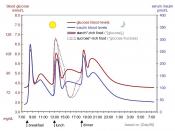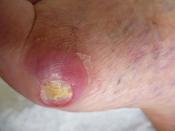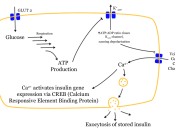There is no cure for juvenile diabetes. There is no way to starve off the disease. We already know that insulin is not a cure but with the use of it, we can prevent the devastating effects such as kidney failure, blindness, nerve damage, amputations, heart attack or stroke. With the knowledge that we have today, we are able to manage juvenile diabetes by monitoring and controlling glucose levels. The prognosis of living a happy and fulfilling life is excellent by managing diabetes with the assistance of a physician and dietician and the commitment of parent and child.
The main goal of treating a child with diabetes is to keep the blood sugar levels in normal range as close as possible. Children and teens affected with diabetes need to monitor their blood levels and inject insulin 3-5 times a day. Insulin is the most effective way for treatment. A child with diabetes will not be able to sleep in too late because a normal day will start with checking their levels to make sure they haven't dropped into a dangerous level.
Parents are given a glucose meter, and after the child has washed their hands, a tiny lancet will prick their finger. A drop of blood is placed on the meter and then the glucose level can be read. The amount of insulin injections administered will be dependant on the results of the monitor. One major drawback to injecting insulin is the fact that glucose levels can "swing" up high shortly after an injection, and go down low before the next one. Injections must be timed correctly and based around meals. If blood sugar levels swing too low, the child is at risk for having a seizure.
An alternative to injecting insulin is the use of an insulin pump which...


